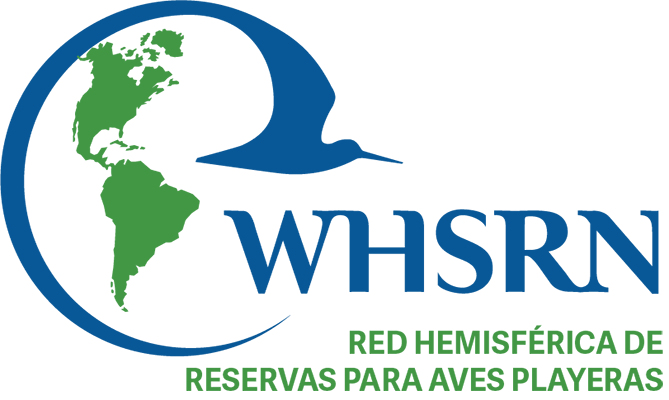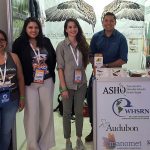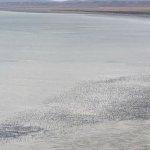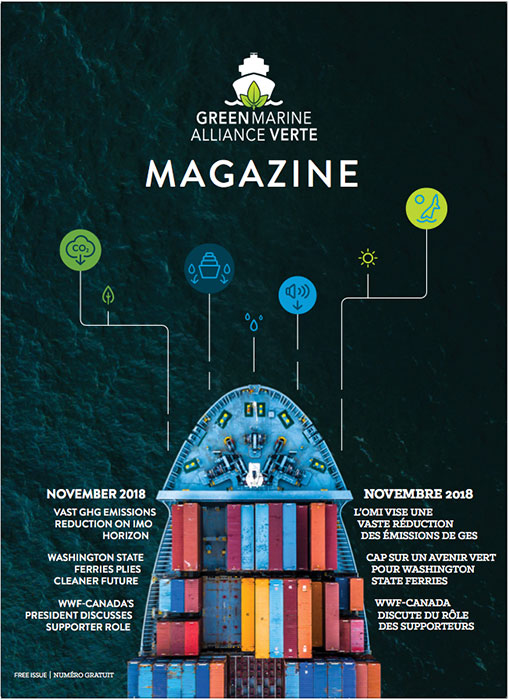
This story, by WHSRN partner David Bradley and WHSRN Conservation Specialist Diego Luna Quevedo, was originally published in the November 2018 issue of Green Marine Magazine.
Renowned biologist Dr. Thomas Lovejoy has said: “If you take care of birds, you take care of most of the environmental problems in the world.” Birds can be found utilizing every large body of water on Earth.
The movement of ships is almost as extensive. As birds and ships roam the seas, they aggregate at key hubs that often happen to be estuaries. For long distance migratory species, estuaries are stopover sites where the birds rest and refuel. Globally, the loss of estuary habitats, especially mudflats, is driving major declines in a group of birds known as shorebirds. Our column will focus on the connections among ports, intertidal mudflats and shorebirds, but first let’s consider more broadly the interactions between shipping and birds.
Where shipping and birds overlap in time and space, a range of negative outcomes for birds have been documented, with implications for shipping operations. Petrochemicals from marine shipping and port sources are often fatal for birds. An example in Canada involved congregations of seabirds along routes where ships released oily bilge water. Thousands of chronically oiled, dead seabirds washed up on beaches. It took a combination of legislation, enforcement, and responsible operators establishing in-port bilge-cleaning facilities to address the problem.
Another known issue is that ship- and port-based light pollution can affect the navigational ability of birds and, in some species, lead to mortalities. Efforts are under way to find solutions to this challenge, such as the use of sodium-based lighting systems.
Habitat degradation and loss are likewise having a significant negative impact. In regions with strong legislative tools, such as the Birds and Habitats Directive in Europe, we see substantive efforts to implement solutions to this problem.
In 2005, the PIANC Environmental Commission of the World Association for Waterborne Transport Infrastructure published a useful review of bird habitat management approaches being implemented by ports and waterway authorities. The review recommends an environmental management framework to address potential impacts of ports and shipping on a range of critical bird behaviours occurring across a variety of habitats, from open water to mudflats.
Unfortunately, since that review was published, the world has witnessed major declines in various shorebird populations. The reasons are complex and not always due to shipping and ports, but in some places, such as the Yellow Sea in China, research has been able to link the loss of intertidal stopover sites (mudflats) to the dramatic declines of shore-bird species using the East Asian-Australasian flyway. Large expanses of coastal wetlands have been or are being lost to land reclamation around the world, with port construction a significant driver.
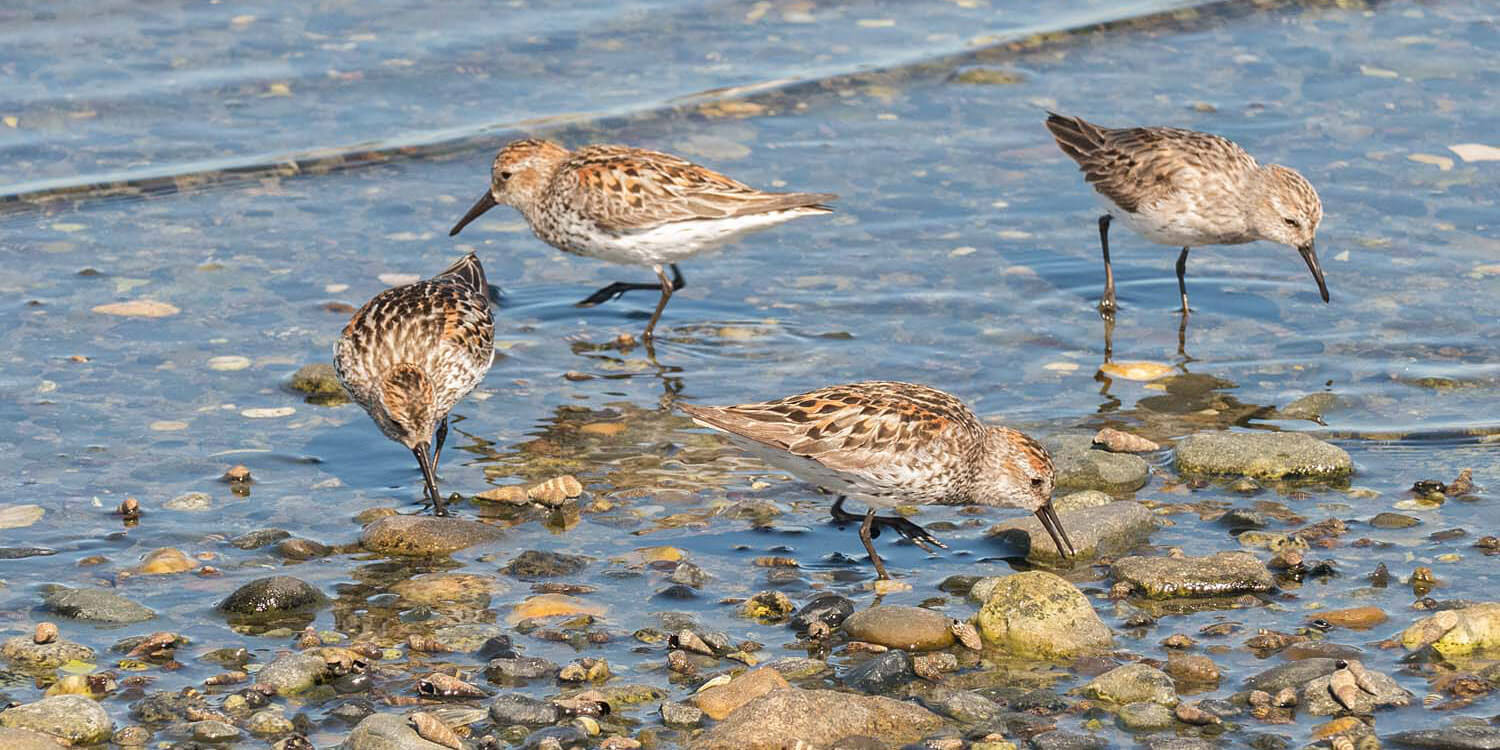
Western Sandpipers at Beach Grove in the Fraser Estuary. Photo: Pete Davidson.
Researchers have recently uncovered a global decline of mudflats with a 17% loss of this important habitat over the last 30 years. The coasts of China and Korea have suffered the most dramatic losses, but there are other examples in the Americas. The fate of the mudflats located in Canada’s Fraser Estuary has become a major consideration for the Vancouver Fraser Port Authority (VFPA), as it seeks to develop the Port of Vancouver into the most sustainable port (and city) in North America.
Environment and Climate Change Canada has warned that the VFPA’s proposed Roberts Bank Terminal 2 project could adversely affect the population levels of western sandpipers. The mudflats where the project is being proposed supports diatoms (tiny microorganisms) that produce omega-rich fatty acids in the form of a biofilm that provides nourishment for the long-distance migrations of shorebirds like the western sandpiper.
The Fraser Estuary is by no means the only Western Hemisphere Shorebird Reserve Network (WHSRN) site where ports need to consider the implications of their planned or actual use of land on shorebirds. At the WHSRN site of Bahía Blanca in Argentina, the Bahía Blanca Port Management Consortium is showing that collaboration is possible. The port works with local stakeholders in an active management role, collaborating on the implementation of new port activities to mitigate environmental impacts. With stakeholders, the port identified 1,000 hectares (2,471 acres) of wetlands to expand the WHSRN site and protect more shorebird habitat. Additionally, the port has provided support to start a marine wildlife rescue centre.
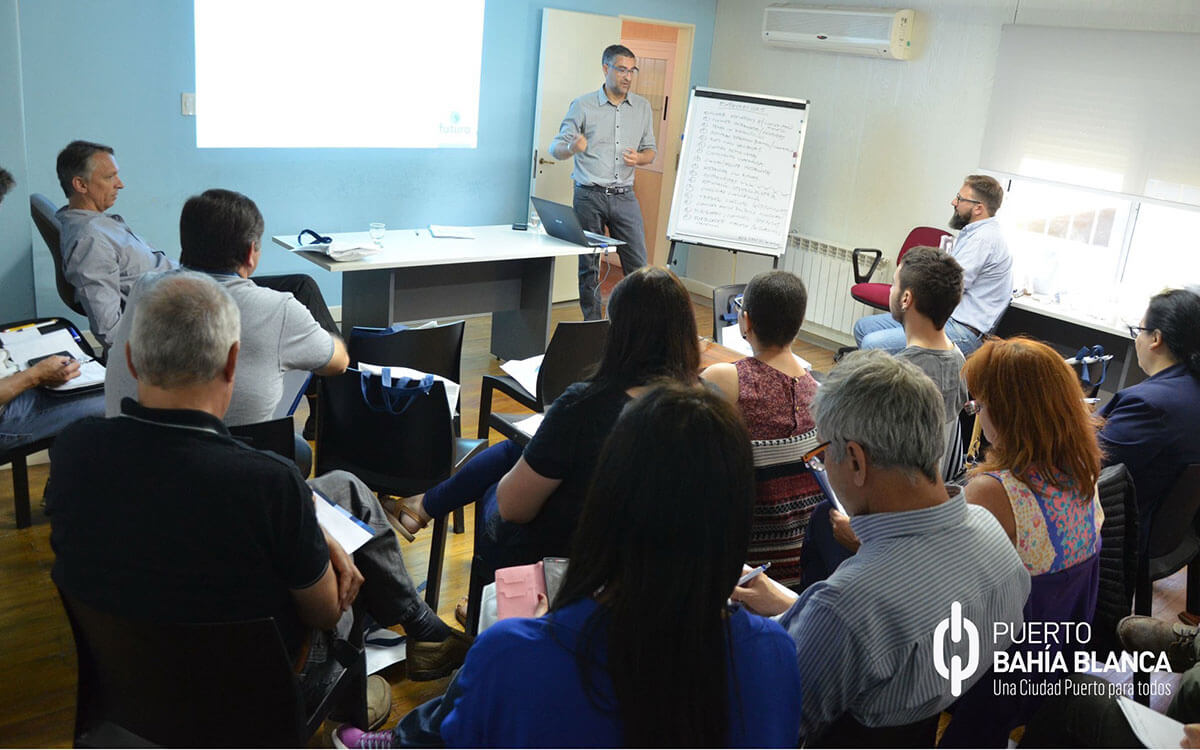
WHSRN Conservation Specialist facilitating a Good Governance Workshop in Bahía Blanca, Argentina. Photo courtesy: Puerto de Bahía Blanca.
Although encouraging, the efforts at Bahía Blanca are not enough. For long-distance migratory birds, collaboration across regions is essential to maintain flyway connectivity. Efforts are under way to maintain shorebird stopovers and other habitats along the Pacific Flyway connecting from Alaska southwards the Copper River Delta, Fraser River Estuary, San Diego Bay, Panama Bay and other major port and habitat hubs.
WHSRN collaborates with conservation partners at 104 sites across 17 countries. There is space at the table for ports to play a pivotal role in the conservation of these connected sites, thereby enhancing the sector’s contribution to sustainability. This would certainly dovetail with Green Marine’s membership embracing sustainability as a core value.
Founded in 2007, Green Marine is a binational environmental certification program that evolved from the maritime industry’s desire to surpass environmental regulatory obligations. To date, more than 125 ship owners, port authorities, terminal operators and shipyard managers from ocean to ocean in Canada and the United States participate in the voluntary, rigorous and transparent initiative. Green Marine is unique in the support it receives from environmental organizations, government agencies and the scientific community.
Learn more about Green Marine at www.green-marine.org
ABOUT THE AUTHORS
Dr. David Bradley is currently the British Columbia Program Director at Bird Studies Canada (BSC), which is the position he filled after completing a post doctorate at the BSC head office in Port Rowan, Ontario, and the University of Guelph on migration and breeding phenology in tree swal-lows. Although his PhD was conducted on the ecology and conservation of an endangered and endemic bird in New Zealand, he has also been involved in several behavioural studies of neotropical birds in Mexico, Costa Rica, Panama and Colombia. He is currently working on several ornitho-logical field studies in B.C., including an invasive mammalian predator study in Haida Gwaii, one of his favourite natural environments, and a Long-billed Curlew migration tracking study in the B.C. Interior.
Originally from Montevideo, Uruguay, Diego Luna Quevedo joined Manomet’s Shorebird Recovery Program in 2009 as a conservation specialist in the WHSRN Executive Office. From his office in Santiago, Chile, he works to bring together partners in developing alliances and processes for effective conservation. In particular, he leads in the design and implementation of strategies and action plans for WHSRN sites, primarily in Latin America, including building capacity for good governance and working with diverse stakeholders.
Cover Photo: The port in Bahía Blanca, Argentina. Photo: Diego Luna Quevedo.


